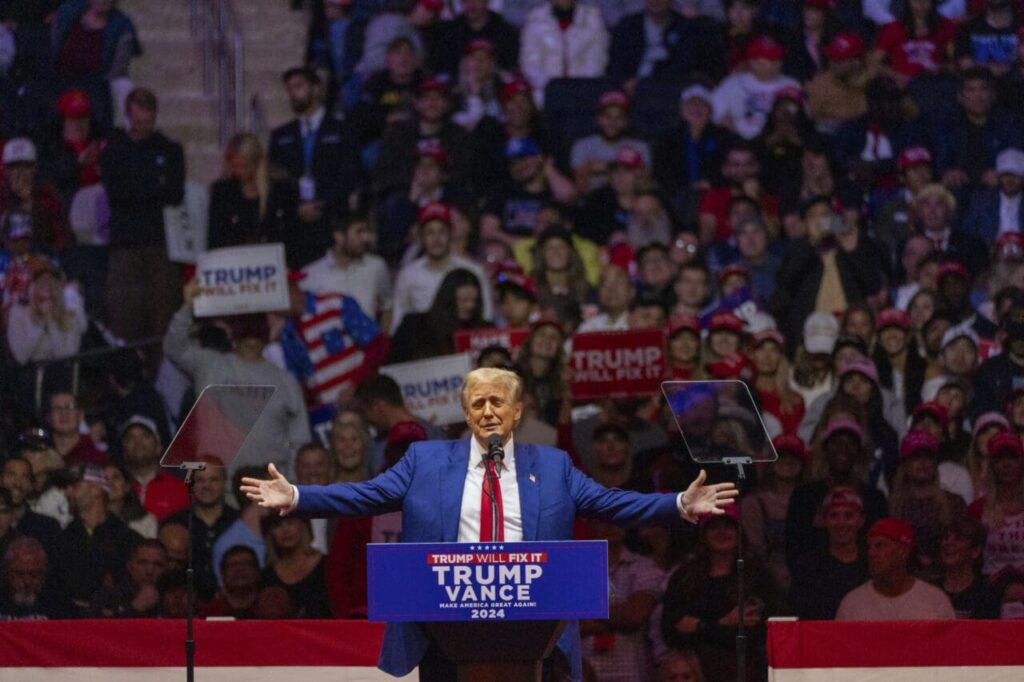WASHINGTON — In a recent address at Madison Square Garden, former President Donald Trump declared that the U.S. is “occupied” by illegal immigrants, vowing a massive deportation initiative if reelected. His plans include executing “the largest deportation program in American history” on his first day in office.
Trump’s rhetoric took a controversial turn during a Thursday event in Arizona with Tucker Carlson. He suggested that Liz Cheney, a former U.S. House member who is actively supporting Vice President Kamala Harris, should face “nine barrels” of gunfire for being a “war hawk.”
“Let’s see how she feels about it, you know, when the guns are trained on her face,” Trump remarked. Experts are increasingly concerned about the divisive nature of Trump’s language, which they argue has grown more violent since his political journey began in 2015.
Analyses, like one from the New York Times, highlight that Trump’s speeches have lengthened over time, averaging 82 minutes from 45 minutes in 2016. Researchers, such as Robert C. Rowland from the University of Kansas, describe Trump’s communications as a mix of “fear, anger, grievance, braggadocio.”
When approached for comment, Trump’s campaign criticized media focus, urging attention to crimes against individuals like Rachel Morin, Laken Riley, and Jocelyn Nungaray, whose deaths are part of Trump’s campaign narrative against illegal immigration.
The Republican National Committee’s Anna Kelly emphasized, “President Trump says the truth: the Harris-Biden administration has allowed over 100 terror suspects across the border.” She mentioned the apprehension of nearly 16,000 illegal immigrants and the daily release of over 5,000 unvetted individuals.
Despite Trump’s focus, several studies indicate immigrants do not commit crimes at a higher rate than native-born Americans.
Graphic depictions in Trump’s speeches
Trump has drawn attention with graphic narratives of violent crimes during rallies, alleging that “Kamala has imported criminal migrants from prisons and jails.” One specific recounting was the 2016 murders by MS-13 in Long Island, described in gruesome detail.
Research by UCLA’s Nikita Savin and Daniel Treisman shows an increasing use of violent vocabulary in Trump’s speeches since 2015, documented in a working paper. Their analysis compares Trump’s language with other political figures, noting his distinct use of the pronoun “they” and frequent violent terms.
Invoking “the enemy from within”
Trump has labeled his opponents as a “radical left machine” and “the enemy from within,” echoing this sentiment in various public statements. In an interview with Fox News, he described these adversaries as a bigger threat than migrants.
The former president has also used social media to propagate claims, including sharing AI-generated images suggesting that Haitian immigrants in Ohio were harming pets—a claim that led to heightened tensions and security measures in Springfield.
Trump’s opponents, such as Rowland, express concern over his rhetoric’s impact, noting a lack of policy discussion replaced by insults. Nonetheless, Trump’s support base remains steadfast, often reflective of a near tie in polls with Harris.
This story was originally published by News From The States





